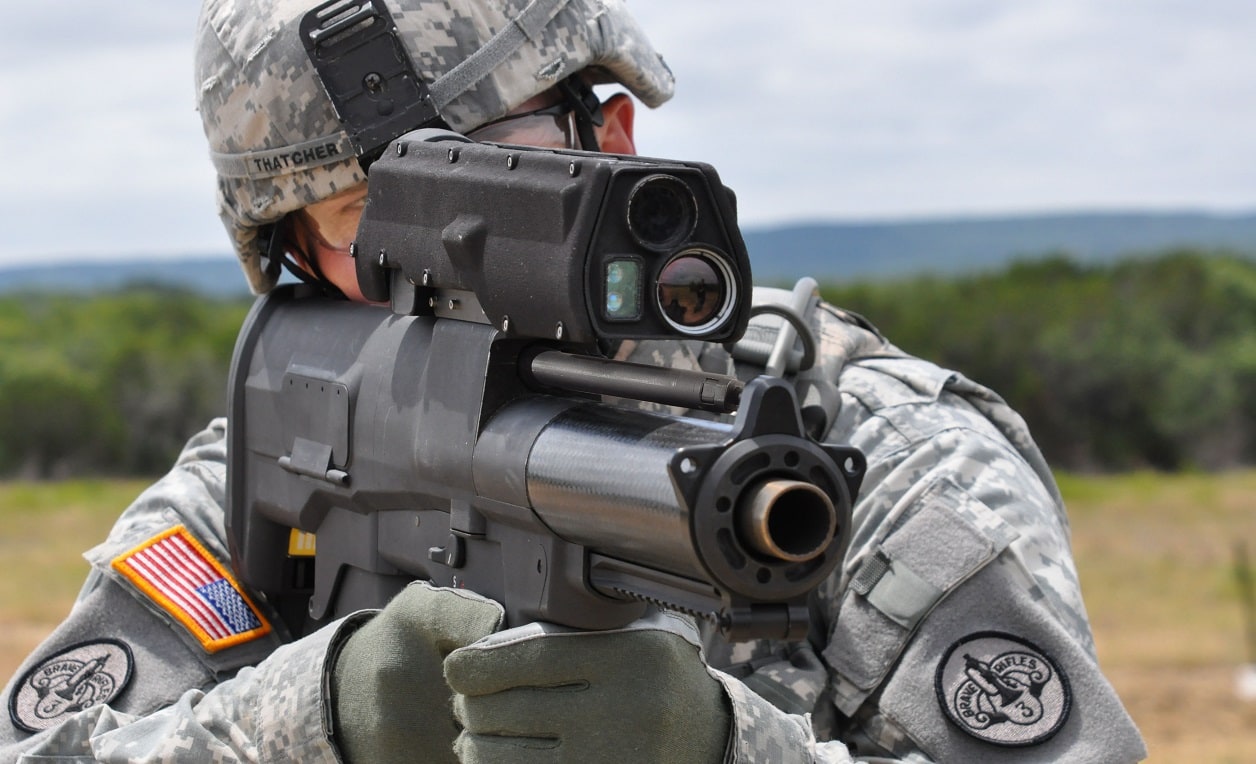The XM25 could have been a game-changer for the US Army as a new platform to fire grenades.
But sadly, for many reasons, the weapon did not work out.
Here is the story as to why:
There are countless examples of military systems that shouldn’t have gone forward – but too often designers “chased” the problems, and in the end that put soldiers in harm’s way. A weapon that doesn’t function properly in the field is dangerous to the user, and the U.S. Army’s XM25 Punisher is such an example.
At least in this case the problem was canceled and the lessons (hopefully) learned.
History
Developed by Alliant Techsystems and Heckler & Koch under the Counter Defilade Target Engagement (CDTE) program for the Army, the XM25 System was meant to provide a soldier with a revolutionary weapon platform that could provide increased lethality and range using 25mm programmable ammunition. The handheld weapon was also designed to enable small units and individual soldiers to engage defilade targets by providing a 25mm air bursting capability that could be employed in all operational environments.
It was an individually fired, a semi-automatic, man-portable weapon system that seemed well-suited to the conflicts in Afghanistan and Iraq, where it could reduce the reliance of small units on nonorganic assets such as mortars, artillery, and air support. It could provide a way to reach those targets when time was critical – and in addition to the air-bursting ammunition, the Army considered ways of developing additional 25mm rounds that could support other missions. This could have included armor-piercing as well as ammunition for non-lethal scenarios.
The Specs
At 13.8 pounds, including target acquisition and fire control units, the XM25 CDTE was 30 inches long and had a range of 500 meters to a specific target, and an 800 meter effective range for an area target. It featured a “bullpup” configuration where the magazine and applicable feed system were mounted to the gear of the pistol grip and receiver, which helped stabilize the weapon while reducing the weight of an added stock. The weapon’s target acquisition and fire control could also be integrated with thermal capability with direct-view optics, laser rangefinder, compass, fuse setting, ballistic computer, and internal display.
According to the Army, “An individual Soldier employing basic rifle marksmanship skills can effectively engage exposed or defilade targets in just seconds out to 800 meters.”
The platform had the promise to offer the benefits of a larger weapon such as the M47 grenade launcher with added mobility.
Early studies indicated that the XM25 with airburst rounds could be as much as 300 percent more effective at engaging the enemy than other squad-level grenade launchers. It was successfully tested at the Aberdeen Test Center in Maryland in August 2009.
Why It Failed
The Army intended to purchase some 12,500 of the weapons, but in February 2013 the XM25 was removed from use in Afghanistan due to a live-fire misfire incident during the second round of operational testing. The developers of the platform noted that nearly 5,900 rounds have been fired between failures, but the misfiring caused concerns with the Army, which delayed the move into full-rate production of the XM25.
Also, according to Stars and Stripes, an Army Ranger unit “actually refused to take the cumbersome weapon on a raid in place of a primary weapon like an M4”. The report also noted that a “key complaint was that the weapon’s basic load of 36 rounds was heavy and easily depleted during direct-fire engagements.”
In June 2013, the Senate Armed Services Committee then eliminated funding for the 1,400 XM25s that were part of the Fiscal Year 2014 (FY14) budget.
The actually death blow came when the contract was canceled for good in 2017 after Orbital ATK sued Hechler & Koch for millions due to a breach of contract dispute involving the weapons system, as Task and Purpose reported back in 2018, “passing the blame for the missing prototypes on the German gunmaker and putting the XM25 contract — and, in turn, the program — in jeopardy.”
While some Army leaders suggested the platform’s safety concerns could have been addressed, a combination of fiscal constraints and design flaws shut down the XM25 Punisher for good.
Peter Suciu is a Michigan-based writer who has contributed to more than four dozen magazines, newspapers and websites. He regularly writes about military small arms, and is the author of several books on military headgear including A Gallery of Military Headdress, which is available on Amazon.com.

